VMware’s CloudHealth and Flexera market themselves as two of the best cloud management platforms today. For organizations with on-premises, cloud, and SaaS operations, both offer a wide range of enterprise-level tools and capabilities.
Additionally, both companies offer cloud security, compliance, and governance solutions. Yet, each cloud governance platform has its strengths.
Each has its tradeoffs. So, before you choose Flexera or CloudHealth, here’s what you need to know.
What Does Flexera Do?
Flexera is a SaaS-based, hybrid cloud management platform for enterprises with complex IT environments. Picture this.
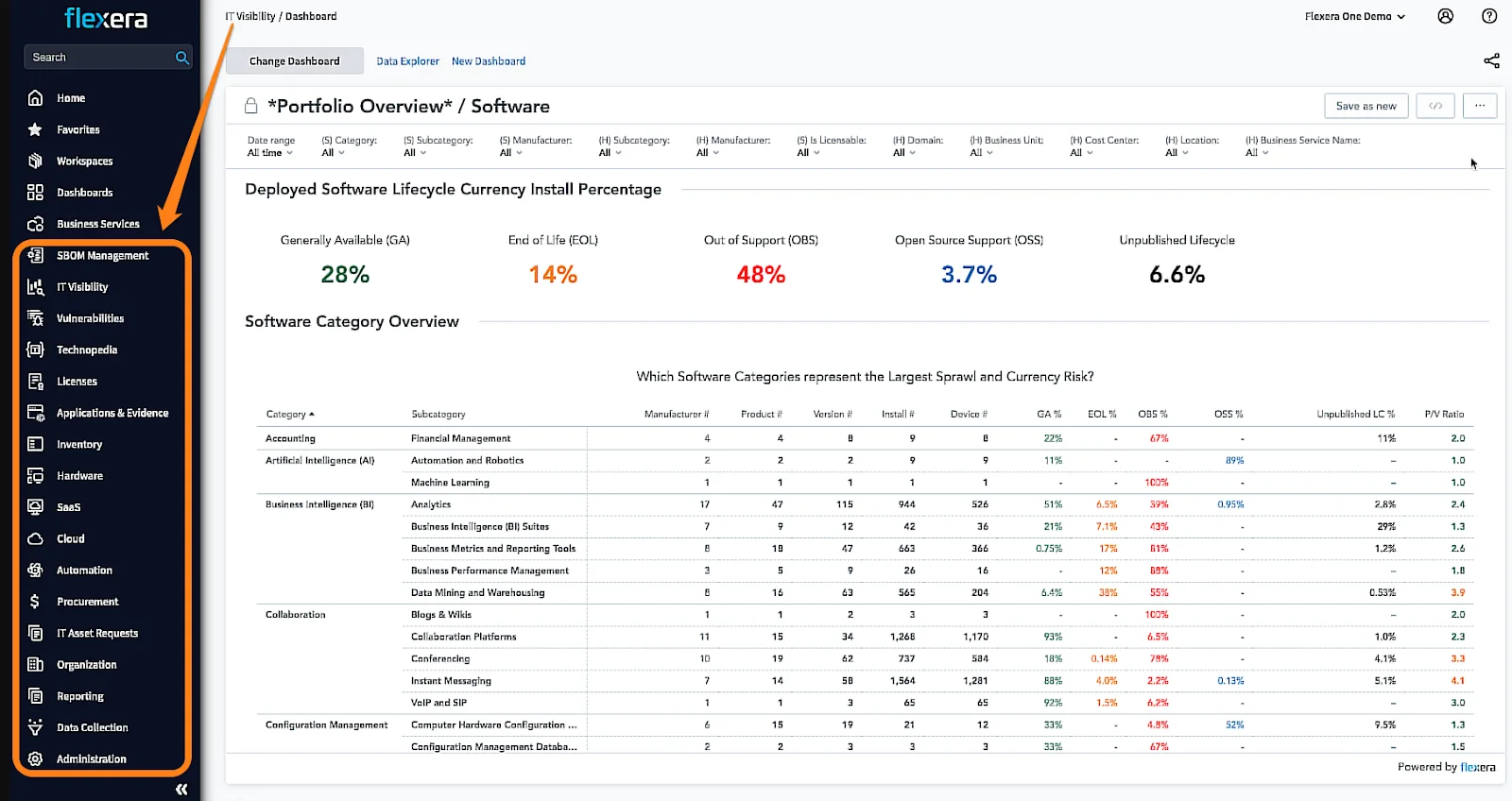
The platform markets itself to organizations with on-premises, cloud, and SaaS environments to manage. To do that, Flexera offers several features.
IT visibility
Flexible provides a deep view of your IT infrastructure components, including SaaS and cloud services as well as on-premises assets. As an example, it surfaces which software tools each team or department in your organization uses. You can use this to discover shadow IT solutions, identifying which are needed and which ones you can cut to reduce waste.
Hybrid IT management
The solution consolidates the management of SaaS, cloud, and on-premises infrastructure into one. With Flexera’s platform, you can more quickly monitor your entire stack and discover gaps without leaving the platform, instead of using multiple tools to capture different parts of your complex IT infrastructure.
Cloud migration management
With Flexera One, organizations can migrate their on-premises workloads to a public or private cloud. You can use it for cloud migration planning, roadmapping, and progress tracking your digital migration.
IT asset management
An IT organization can use this capability to discover hardware and software assets within a hybrid environment. It can help organizations document their capacity, identify how they’re using hardware, licenses, and more, and reduce waste.
Cloud cost governance
Flexera also offers a cloud cost management platform where organizations can practice cloud cost assessment, governance, and optimization across the hybrid environment. Organizations can get a comprehensive view of their IT spending, enabling them to identify cost savings opportunities. It also helps set budgets and track spending in real time.
IT Security
This can help them detect potential security threats early and take preventive measures before they can cause any damage. IT security personnel can also use the platform to identify patterns of suspicious activity and quickly respond to threats.
Application readiness
It offers a software packaging solution that organizations can use to improve their application deployment capabilities, including reducing the risk of deployment failure.
What Does CloudHealth Do?
CloudHealth (VMware Aria Cost powered by CloudHealth) is an enterprise-level cloud management platform. It offers a variety of capabilities to enable large organizations and managed service providers to manage their cloud-based and on-premises IT infrastructure, costs, and security.
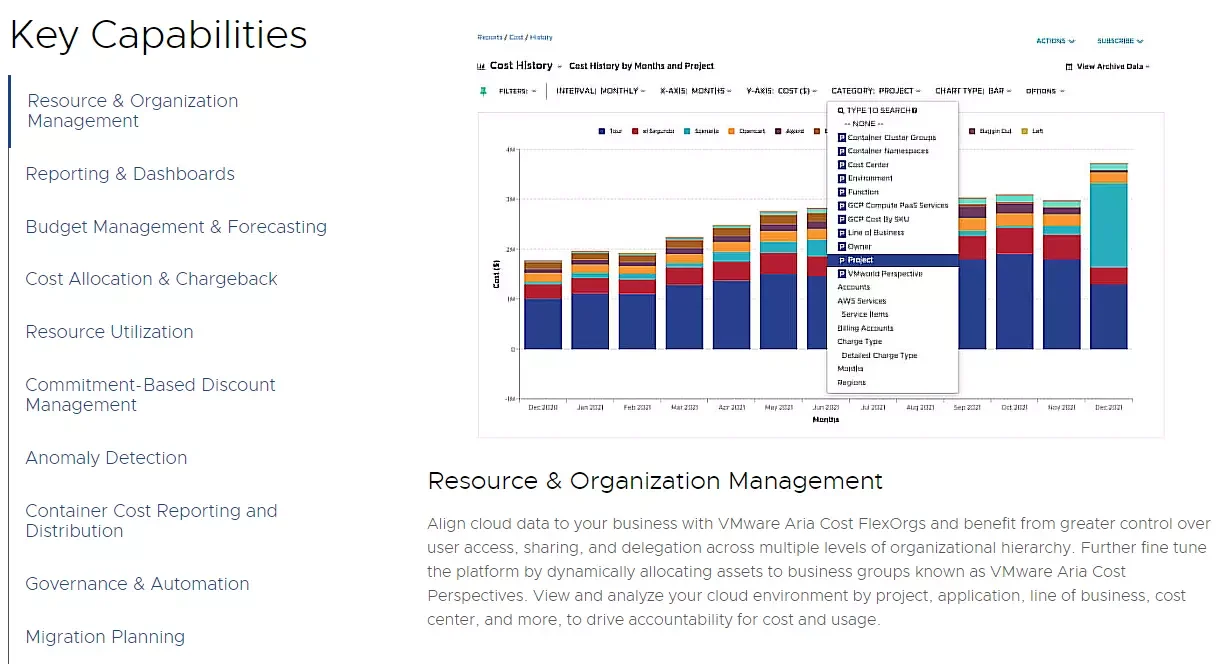
Here’s what you can do with CloudHealth features.
Cloud migration management
CloudHealth provides a platform for cloud planning, roadmapping, and tracking migration progress to any of the major cloud service providers. Organizations can use this to asses what workloads to move to a public or private cloud, including the dependencies involved.
Cloud financial management
With CloudHealth by VMware, organizations can visualize, monitor, and optimize their cloud spend. The tool relies on tagging and supports rightsizing, discount program management, and different views of resource usage and associated costs across business units, just like other legacy tools.
Cloud operations management
The product offers a platform to visualize, automate, and track IT infrastructure components in a multi-cloud environment and on-premises. Understanding how the different moving parts interact can help organizations better allocate resources and optimize their usage across the environment.
IT security management
Formerly CloudHealth Secure State, the system offers a range of tools to help organizations understand their security posture across multi-cloud environments and on-premises settings. Now VMware Tanzu GuardRails lets organizations create and manage end-to-end policy enforcement to improve IT security and compliance.
Automation governance
Using Tanzu CloudHealth’s Cloud Center of Excellence (CCOE), organizations can leverage rules and policies to keep their IT assets in a desired state. The policies can automate changes to the environment when those conditions differ from the desired state with automated actions.
What Are The Differences Between Flexera And CloudHealth?
While CloudHealth and Flexera have many similarities, their differences can make all the difference for your organization. To help you decide which cloud management platform is right for your needs, here are some of those differences.
1. Dashboard and IT visibility
With CloudHealth, you can visualize your IT assets, resource usage, and security posture in a public cloud, private cloud, hybrid cloud, containerized, and decentralized multi-cloud environment.
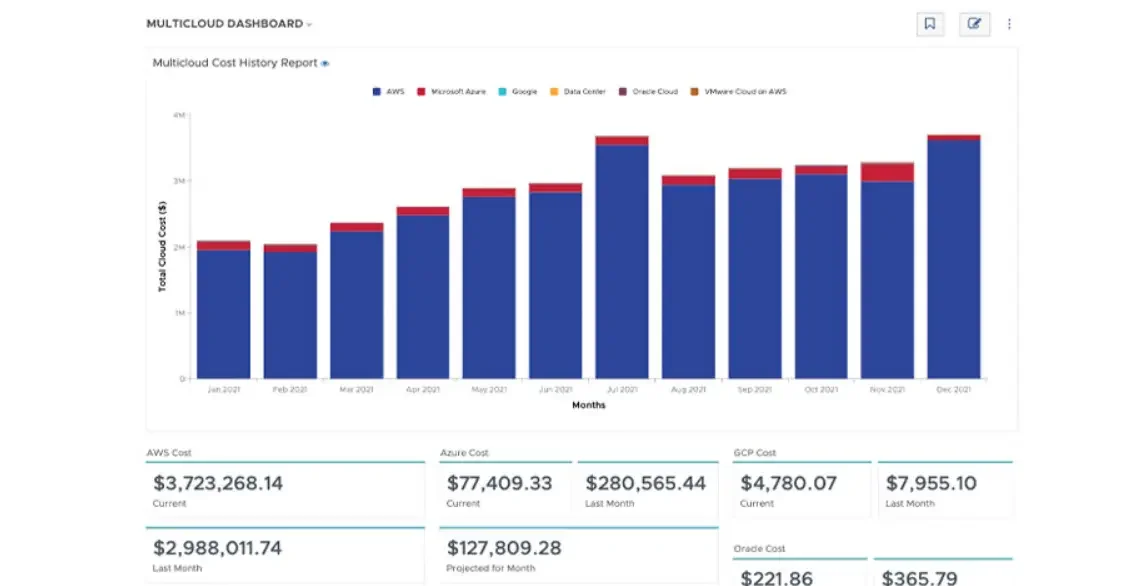
CloudHealth is also available for AWS, Azure, GCP, Alibaba Cloud, and OCI. But it doesn’t offer an integrated view to help you compare performance and cost without generating separate reports and views; you get a separate dashboard of each instead.
Meanwhile, Flexera also delivers visibility across your On-premises, public cloud, private cloud, and SaaS deployments. Compared to CloudHealth, Flexera focuses more on SaaS management and is available as Flexera One for IBM, Technopedia, and Salesforce.
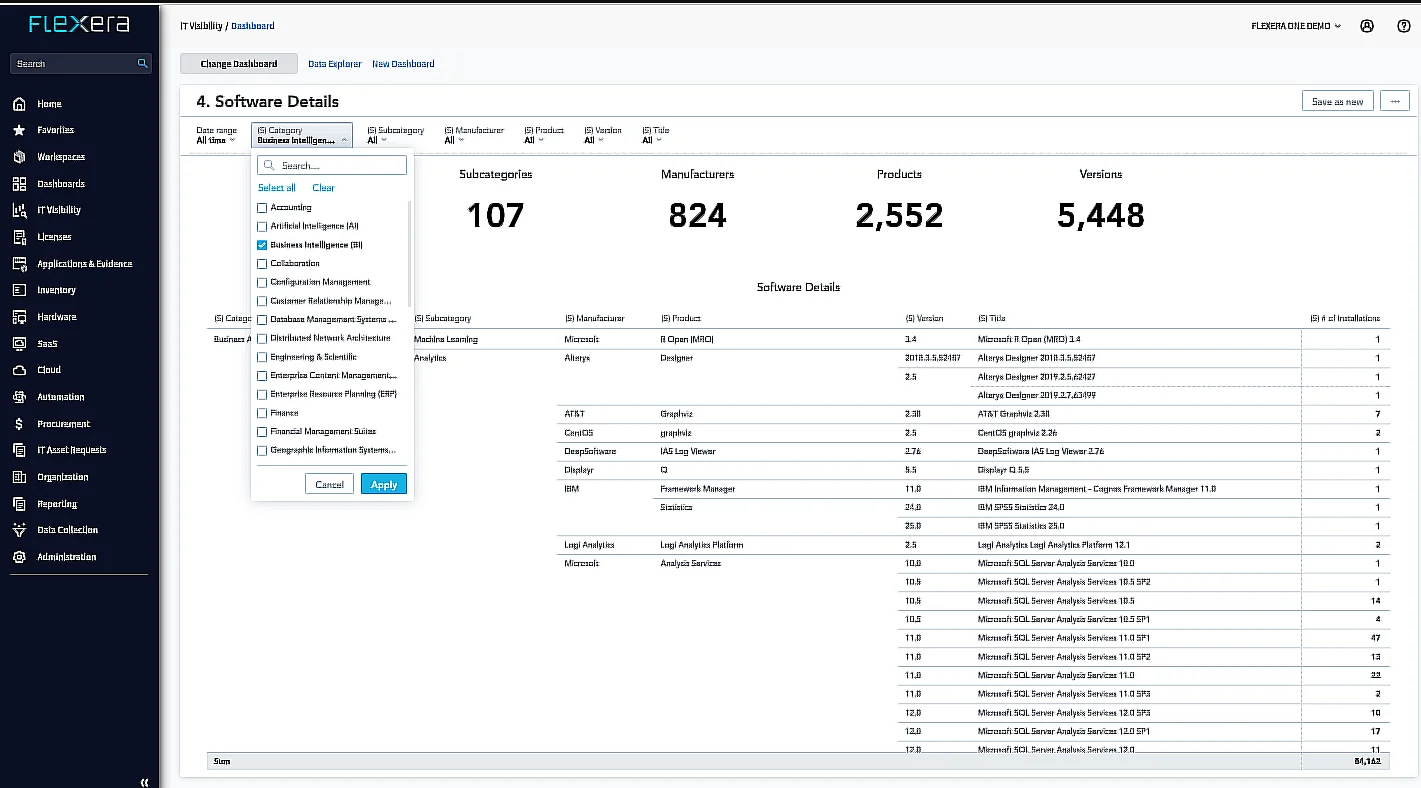
This approach means you can use Flexera to surface all the SaaS tools you use across the organization, see which ones are underutilized to decide which ones to cut to reduce the cost of Shadow IT, SaaS sprawl, End of Life/End of Support lifecycle management, and unnecessary subscriptions.
2. Resource and cloud cost management
Flexera One’s cloud cost management platform has multi-cloud coverage capabilities, just like CloudHealth. It also offers a more unified view of your IT costs across a multi-cloud environment, SaaS, and on-premises.
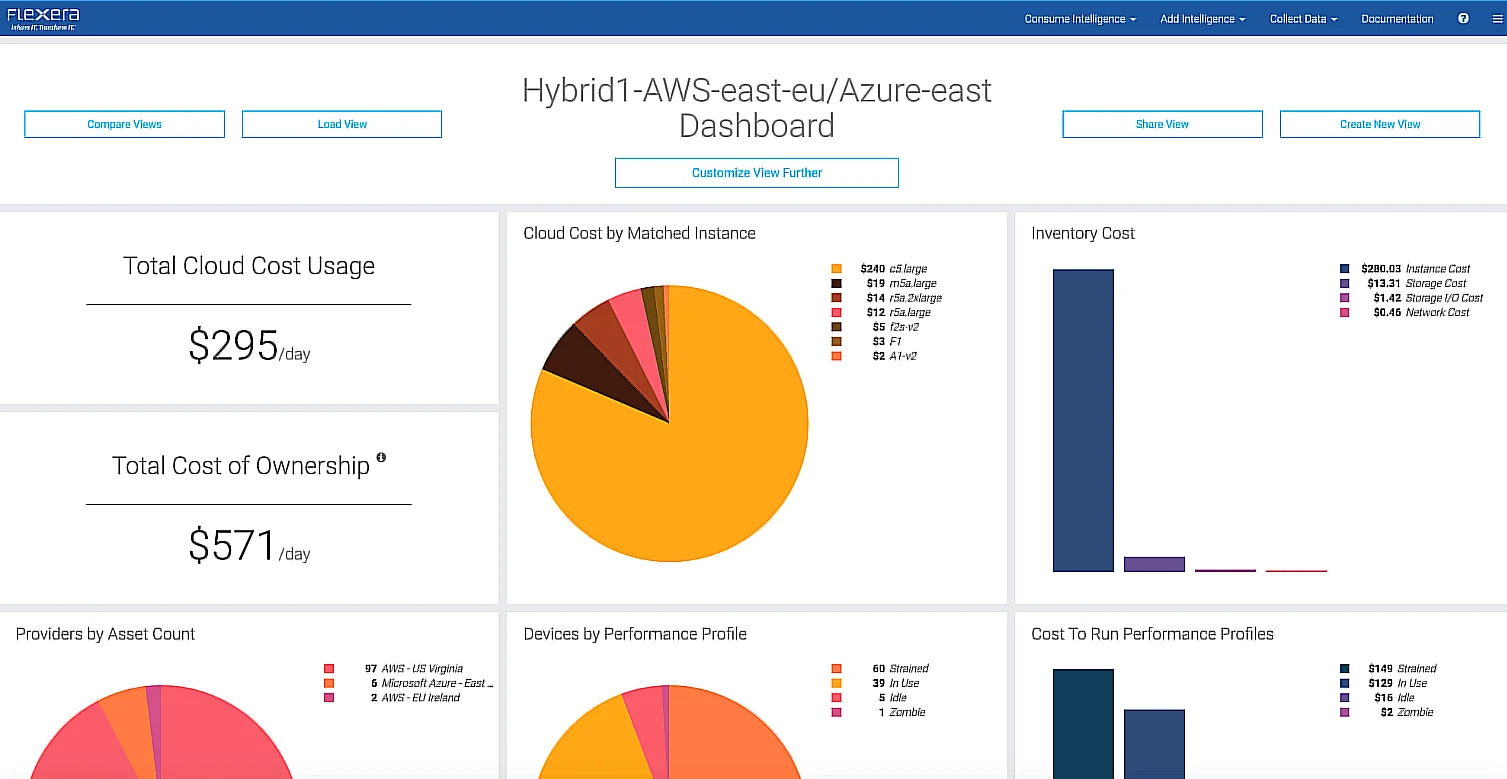
By categorizing your SaaS accounts, license utilization, and more, you can prevent SaaS sprawl. In addition, you can view your cloud costs by type (public, private, or hybrid), provider (AWS, Azure, Oracle, IBM), instance type, and payment type.
In addition, you can track commitments and specific spending categories, such as compute, storage, and containerized workloads.
CloudHealth tracks your resource usage and associated costs across multiple cloud environments using cost allocation tags. It also supports chargeback and showback approaches to cost allocation by department, team, application, and project.
Then you can compare, purchase, and track your committed discounts, including Reserved Instances and Savings Plans.
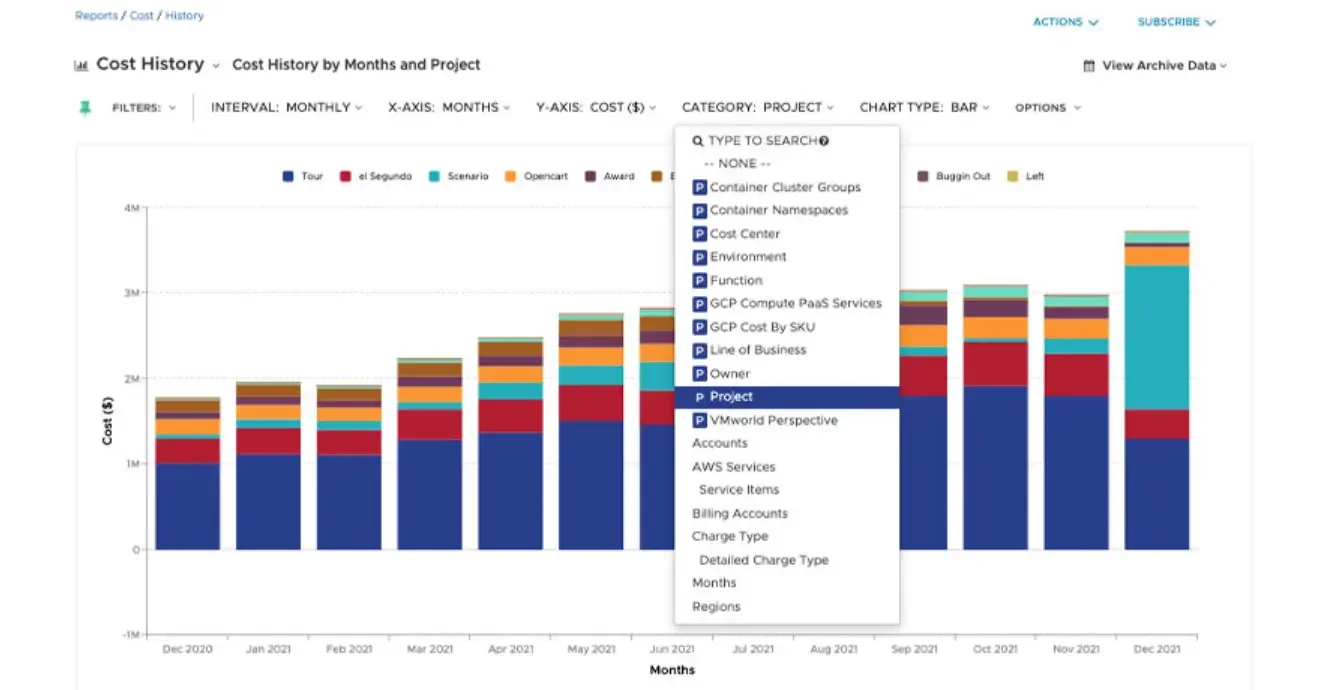
CloudHealth also lets you set custom IT budgets, track spending against them, and receive anomaly alerts when costs exceed certain thresholds. Tanzu’s CloudHealth also offers automated rightsizing recommendations and policy-based automation to automate some actions when specific cost issues arise.
However, CloudHealth and Flexera do not provide unit cost insights, such as Cost per Customer or per Feature, like cloud-native cost optimization platforms like CloudZero.
Also, CloudZero is an engineering-friendly cost optimization platform, enabling your technicians to understand their cost impact based on their architectural decisions. For example, engineers can track real-time cost per deployment, per environment, per team, per service, and more.
3. IT governance and automation
Tanzu CloudHealth automates governance based on custom policies. Using these, you can execute specific actions in your daily cloud operations to bring your infrastructure components to your desired state, whether it is performance, security, or cost control.
Flexera One, on the other hand, offers both custom policy-based workflows and out-of-the-box templates to get you started. For example, you can use its template-based provisioning, orchestration engine, and reusable blueprints for governance.
4. IT security
CloudHealth not only provides Identity and Access Management (IAM) functionality but can also help you track the cost impact of security issues. In Tanzu GuardRails (formerly VMware Aria Automation for Secure Clouds or CloudHealth Secure State), these capabilities are bundled together in one platform.
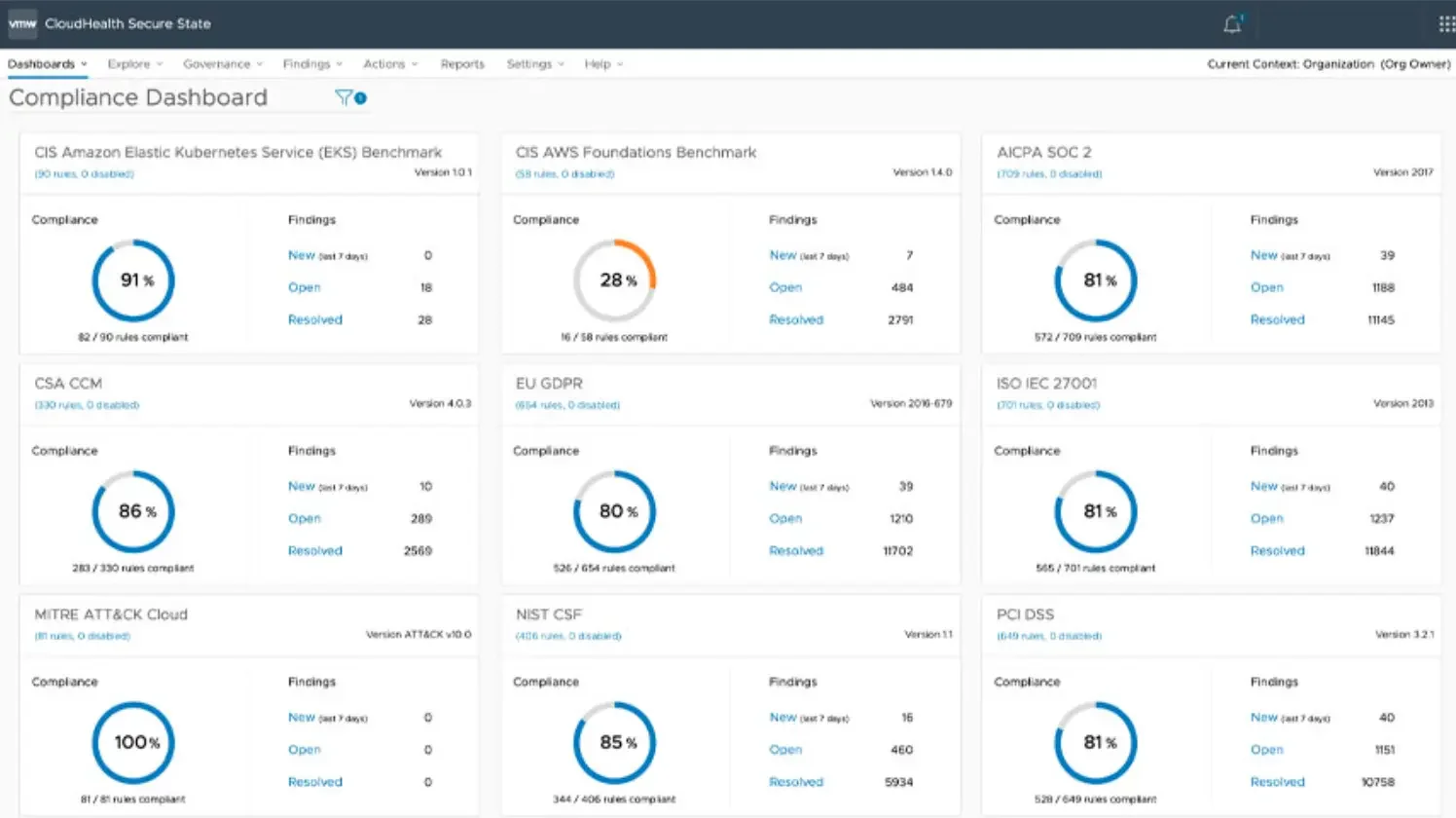
The feature uses real-time detection, machine learning (ML), and automation to continuously monitor cloud risks. As a result, you can monitor how attackers take advantage of resource relationships, system misconfigurations, and entitlements to move laterally against you (so you can stop them, of course).
Flexera’s Security Vulnerability Manager helps you identify, prioritize, and patch security issues in a hybrid environment. It is particularly good for surfacing third-party patches and automating them in your environment when they meet certain criteria.
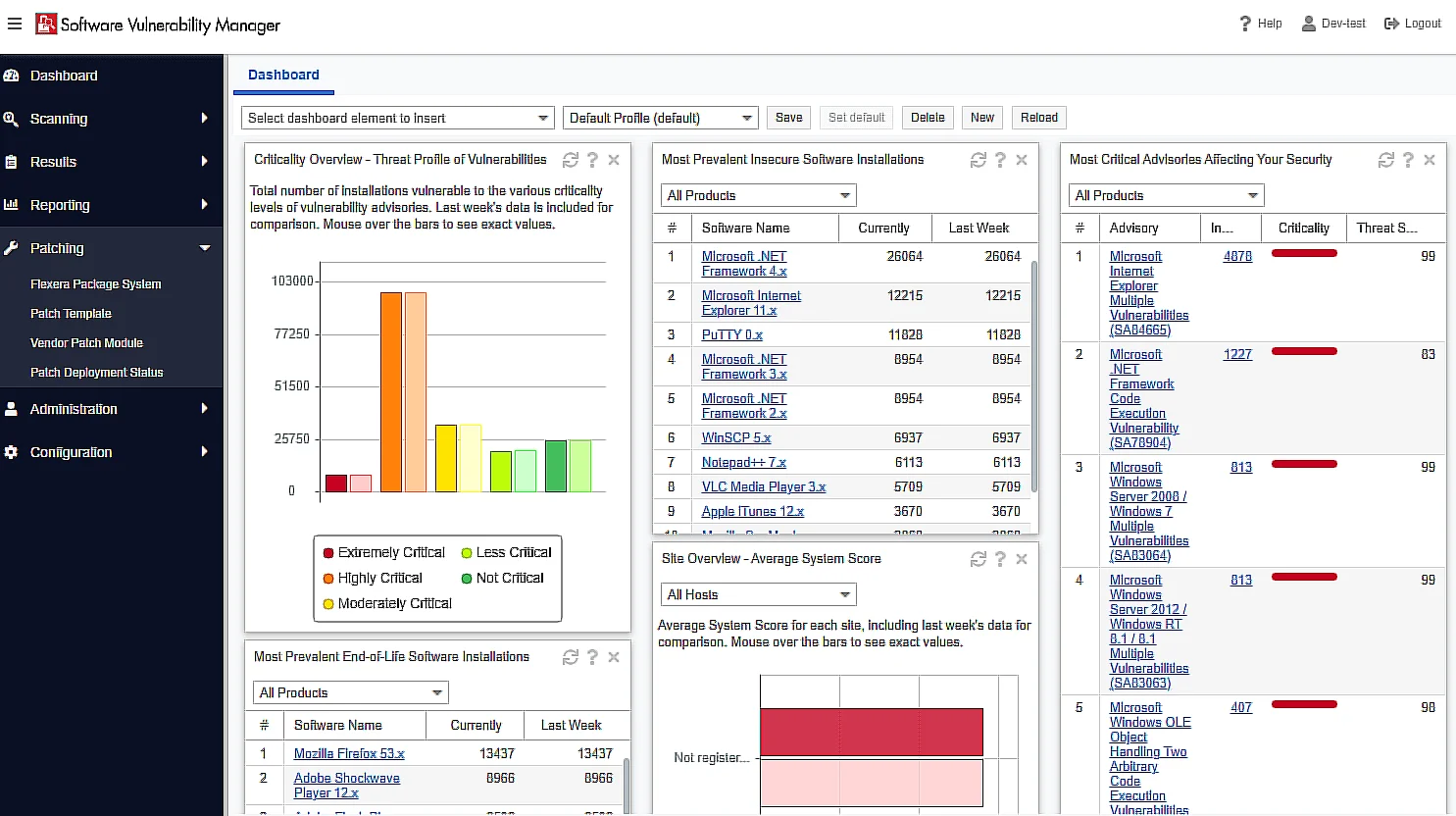
Additionally, you can use Flexera’s IT security suite to assess and fix security concerns across Red Hat Enterprise Linux, Windows, and Mac systems – and even cloud servers in a public or private cloud.
5. Pricing
The pricing for CloudHealth is subscription-based (SaaS model). It offers a 14-day free trial, but there is no additional pricing information on its website. Yet, there may be some clues in CloudHealth’s pricing on AWS Marketplace.
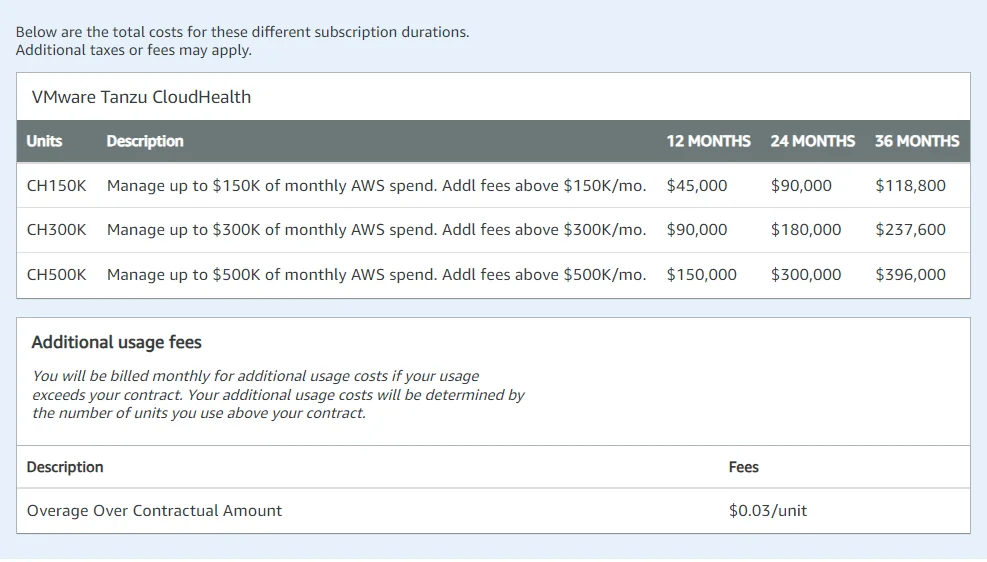
For AWS spending under $150,000 per month, VMware Tanzu CloudHealth charges a fixed annual cost of $45,000 (12 months), $90,000 (24 months), and $118,800 (36 months), according to AWS Marketplace.
It costs $90,000, $180,000, and $237,600 to manage up to $300,000 in AWS monthly spending. Additionally, you’ll need to invest $150,000, $300,000, or $396,000 to manage AWS spending that’s up to $500,000 per month.
You will be charged additional usage fees if you exceed your contractual usage terms on a monthly basis. Overages cost $0.03 per unit.
Flexera, like CloudHealth, offers custom pricing based on your usage. However, it charges you based on the specific Flexera feature you use, such as cost governance or IT visibility.
For more details, you’ll need to contact the company’s customer support. You can, however, put its charges into perspective by considering its AWS Marketplace pricing.
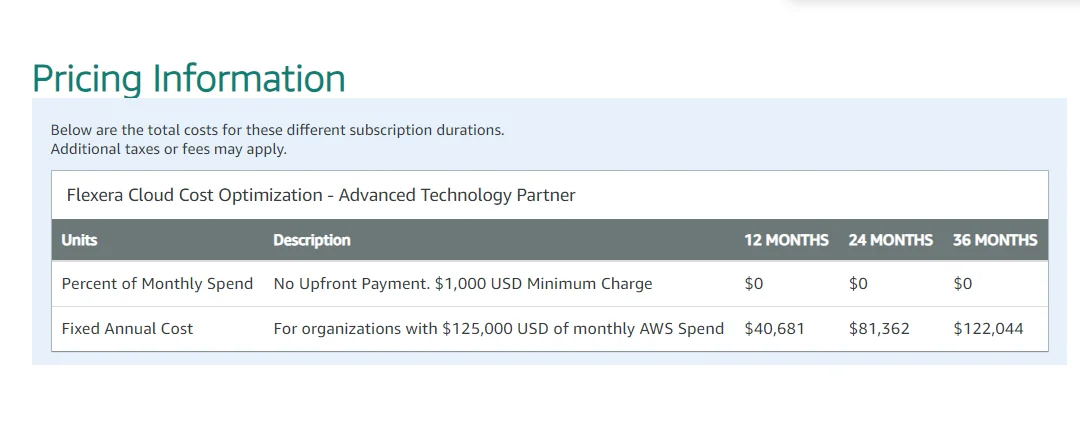
As of Q4, 2023, Flexera Cloud Cost Management pricing for AWS is based on a percentage of your monthly spend (SaaS-based). While it doesn’t charge an upfront fee, it does require a $1,000 minimum charge.
But if your AWS spend is at or exceeds $125,000 per month, Flexera charges a fixed charge billed annually; $40,681 (12 months), $81,362 (24 months), and $122,044 (36 months).
Flexera One’s IT visibility on AWS costs $200,000 for a three-year contract that covers up to 1,000 servers and 5,000 clients.
Is Flexera Or CloudHealth Better For Your Business And Why?
Here’s a quick summary:
VMware Tanzu CloudHealth pros
- Designed for enterprises with public, private, hybrid, and multi-cloud deployments, containerized applications, and on-premises environments.
- Combines cloud cost management, cloud operations, IT security, and compliance management in one platform
- Supports automations (policy-based) to ease hybrid and multi-cloud management.
- Understand cloud costs by department, team, project, and application (supports chargebacks and showbacks).
- Also includes cost-saving recommendations and the ability to automate remedial actions to save time and prevent surprise costs.
VMware Tanzu CloudHealth cons
- Requires near-perfect tagging to collect accurate data.
- Legacy cloud cost management views (does not deliver per unit costs such as cost per customer, per feature, per engineering deployment, etc).
- Designed for large organizations, not for companies at any growth stage.
- It can be overwhelming and requires specialized training (or a premium support plan) to make the best use of it.
Flexera pros
- Includes cloud cost management, on-premises IT oversight, cloud, and SaaS governance within a single platform.
- More modern cloud management platform with deeper integration for cloud-native technologies such as Kubernetes.
- Includes SaaS management to curb SaaS sprawl (license management, unused tool management, etc).
- Supports data normalization and CMBD data quality management.
- View cloud costs by center/team, allocation rules, cloud type, cloud provider, instance types, and payment methods.
Flexera cons
- Charges a percent of your cloud spend.
- Cloud cost management lacks granular insights such as cost per customer, per software feature, per deployment, etc.
- Relies heavily on tags, too.
- Steep learning curve and can be overwhelming to set up and implement successfully.
- Supports fewer vendors and integrations than CloudHealth.
- Designed for enterprises.
How To Understand, Control, And Optimize Your Multi-Cloud Costs The Smarter Way
Large organizations looking for a more traditional approach to cloud cost management, IT security, and operations management can use CloudHealth or Flexera.
But if you prefer a cloud-native, true cloud cost intelligence platform for your cloud cost optimization efforts, CloudZero can help.
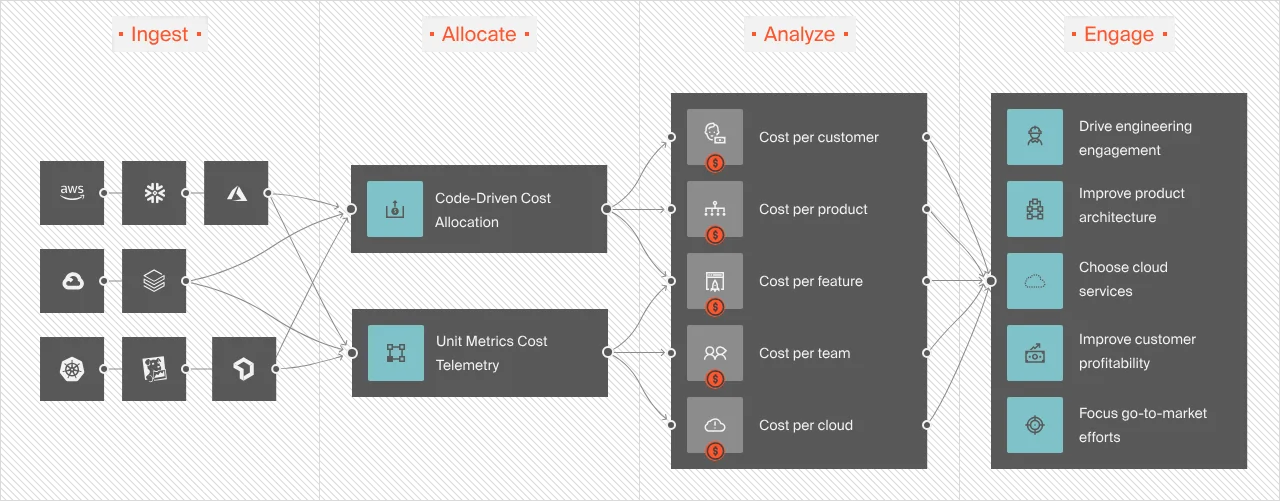
CloudZero empowers you to:
- View instantly actionable costs per unit. This includes Cost per Customer, per Team, per Feature, per Product, per Project, and other custom and out-of-the-box cost dimensions.
- Capture the costs of tagged, untagged, and untaggable resources in the cloud even if you have messy tags. Also supports per-unit cost allocation in a multi-tenant architecture, such as Cost per Tenant.
- Get the industry’s most comprehensive Kubernetes cost analysis today. Supports summaries and detailed cost insights such as cost per hour, per pod, per cluster, per node, per customer, per environment, and more.
- Use insights such as cost per customer to set competitive yet profitable SaaS pricing, discover new revenue streams, and target the most profitable customer segments.
- Allocate 100% of your spending in minutes or hours no matter how complex your environment is. CloudZero also supports real-time allocation so you are always audit-ready and decision-ready.
- Get context-rich and timely cost anomaly alerts via Slack to prevent surprise costs and overspending based on our real-time anomaly detection engine.
- CloudZero pricing is tiered, steady, and predictable — not a percentage of your cloud spend.
Spend less time managing cloud costs and more time improving your core products (CloudZero customers, such as MalwareBytes and Remitly, spend 6-10 hours fewer now). Drift is en route to save $4 million in AWS spending.
Want similar or better results?  to experience CloudZero for yourself.
to experience CloudZero for yourself.








